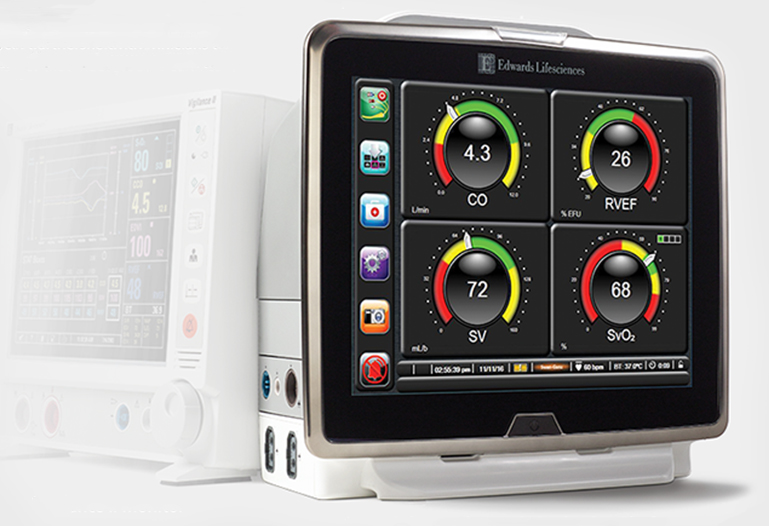The global hemodynamic monitoring devices market is projected to reach $2,156.6 million by 2030, according to CRI’s new report. The study also highlights that the market is set to witness a CAGR of 8.88% during the period 2021-2030.
https://www.cri-report.com/product/global-hemodynamic-monitoring-devices-market-focus-on-product-modality-setting-and-21-countries-analysis-and-forecast-2021-2030/
The comprehensive study of the global hemodynamic monitoring devices market extensively covers the following:
• Market numbers on the product, modality, and setting segments and respective sub-divisions that are influencing the market
• More than ten key medical device companies present in the market
• Market share analysis for global hemodynamic monitoring devices market
• Detailed global and regional market analysis, including the scrutiny of 21 countries
Besides these parameters, the study also encompasses the market growth drivers, opportunities, market restraining factors, competition mapping, segmental analysis, and COVID-19 impact on the market.
This report indicates that the rising prevalence of cardiac disorders, increasing technology integration in hemodynamic monitoring, development of remote hemodynamic monitoring devices, and entry of key medical device companies through mergers and acquisitions are fueling the growth of the market.
The study highlights the various emerging opportunities, such as the emergence of regional hemodynamic monitoring devices companies, the development of patient-friendly hemodynamic monitoring devices, and the development of virtual training applications for medical staff, which can be leveraged by players operating in the market. Furthermore, the study also highlights the potential of the opportunities in short-, mid-, and long-term duration.
Additionally, the market intelligence report throws a spotlight on the funding scenario, key technology trends, epidemiology of cardiovascular diseases and diabetes, regulatory landscape, and patent scenario for the global hemodynamic monitoring devices market.
To gain a holistic view of the market, data from different segments of the market has been analyzed minutely. These segments include product, modality, setting, and region. Each of these segments is further categorized into sub-segments and micro-segments to compile an in-depth study.
The modality segment of the global market includes analysis of different types of hemodynamic monitoring modalities such as invasive, minimally invasive, and non-invasive.
To emphasize the impact of COVID-19 on the global hemodynamic monitoring devices market, Swati Sood, Lead Analyst, states, “In the pre-COVID-19 scenario, the market was expected to grow at the compound annual growth rate (CAGR) of 10.14% during the forecast period 2021-2030. However, the COVID-19 pandemic has resulted in a decline in the market in 2020, and the trend is anticipated to continue for a short-term duration. The shutting down of elective surgeries, delayed procurement decisions, and limited capital expenditures by medical settings are expected to restrict the growth of the market till 2022. However, from 2023, the market is projected to be normalized. Also, the integration of technologies and development of connected and remote hemodynamic monitoring devices would propel the growth of the market during the forecast period 2021-2030”.
Key insights are drawn from in-depth interviews with the key opinion leaders of leading companies, market participants, and vendors. The key players profiled in the report include Baxter International Inc, Caretaker, LLC, CN Systems Medizintechnik GmbH, Deltex Medical Group PLC, Dragerwerk AG & Co. KGaA, Edwards Lifesciences Corporation, GENERAL ELECTRIC COMPANY, Getinge AB, ICU MEDICAL, INC., Koninklijke Philips N.V., Masimo Corporation, Schwarzer Cardiotek, Sramek BioDynamics Inc., and Uscom.
The study also comprises snapshots of emerging companies such as Flosonics Medical, Heart Kinetics, and Retia Medical.
The study also offers strategic recommendations that can help organizations in tracking various products, trends, and technologies that are changing the dynamics of the market.
Who should buy this report?
• Medical device companies that cater to cardiology or patient monitoring specialty: The study offers insights on the competitive landscape, market growth potential, key driving, and restraining factors, and opportunities to grow in the market.
• Startups developing remote patient monitoring solutions: The study offers insights on the key developments, different business models, and key technology trends that would influence the growth of the market.
How can market intelligence on hemodynamic monitoring devices add value to an organization’s decision-making process?
• Aid in product development
• Aid in understanding the funding scenario of the market
• Aid in understanding the regulatory scenario of the market in different regions
• Aid in understanding the patent trend of the market
• Help in targeting a segment for launching a new product
• Aid in understanding the growth potential of different hemodynamic monitoring modalities
• Support in analyzing the market opportunities
• Insights on the key companies in the market
Insightful Questions Covered to Enable Companies to take Strategic Decisions
• What has been the impact of COVID-19 on the global hemodynamic monitoring devices market?
• What is the anticipated impact of COVID-19 on the global market in mid-term and long-term duration?
• What are the key technological trends that influence the global hemodynamic monitoring devices market? What is their future potential?
• Who are the emerging players in the global hemodynamic monitoring devices market that have received funding?
• What are the regulations for hemodynamic monitoring devices across various regions?
• How has the patent filing trend influenced the growth of the global hemodynamic monitoring devices market?
• Who are the key players in the global hemodynamic monitoring devices market?
• What are the key synergistic activities employed by the companies operating or entering in global hemodynamic monitoring devices market?
• What are the key drivers and restraints for the global hemodynamic monitoring devices market?
• What are the growth opportunities in the global hemodynamic monitoring devices market? What is the potential of such opportunities in mid-term and long-term duration?
• Which product type is anticipated to grow with the highest CAGR during the forecast period 2021-2030?
• What is the anticipated growth trajectory of minimally invasive and non-invasive modalities of hemodynamic monitoring during the forecast period 2021-2030?
• Which region is anticipated to dominate the global hemodynamic monitoring devices market during the forecast period 2021-2030?
• What is the anticipated growth potential of various end users and modalities in emerging economies such as Asia-Pacific, Latin America, and the Middle East, and Africa?

